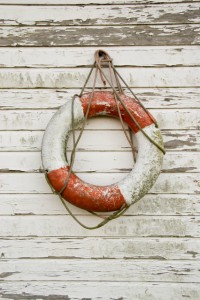Personal Safety in the Shipping Industry
 Personal Safety in the Shipping Industry
Personal Safety in the Shipping Industry
No one working in the shipping industry ever wants to hear the cry of, “Man overboard!” Thankfully, the advances in technology in personal safety in the shipping industry have improved the chances of rescue, should an accident occur. These developments have happened because of the need of maritime operators to meet certain safety standards for their crews and ships. Leading the charge is the Automatic Identification System (AIS). Every ship would benefit by being equipped with this type of transmission beacon.
When accessed, the AIS can provide a ship’s identity and global position. This can help a great deal in emergencies. Now, shipboard AIS technology has been pared down to a personal transmitter. The AIS Survivor Recovery System will revolutionize the way rescues are performed.
One of the first such transmitters put into wide use is the SafeLink R10 AIS SRS. The design of these units allows them to fit into a pocket or in a special holder on a lifejacket. For especially hazardous zones they can even be sewn into the protective gear worn by crewmembers. Additionally, SafeLinks can be retrofitted into a ship’s life rafts.
When activated, these devices transmit alerts and GPS signals to any receiver in a four-mile radius. Suppose a crewmember does fall overboard. The ship will have the AIS receiver up and running, which can pinpoint the location of their comrade in no time. Thanks to the 60-second update intervals, the location of the device will never be in doubt. Another type of personal AIS manufactured by Ocean Safety has a flashing LED light that helps with nighttime rescues. It also will transmit for 24 hours straight.
The use of personal AIS devices are part of the new safety regulations handed down by the International Maritime Organization (IMO). The regulations passed in 2000 specify that all ships of 300 gross tonnages or more, must be equipped with an AIS system for ship-to-ship communication. That is also true of any cruise liner or cargo ship with 500 gross tonnages.
Beyond the professional shipping industry, personal AIS devices are also gaining in popularity with pleasure craft owners and charter fishermen. This has lead to a significant spike in the sales of these devices anywhere there is a marina nearby. Ocean Safety, the makers of the SafeLink, report that there are increased corporate orders for AIS SRS. Apparently, these units are replacing the EPIRB Personal Locator Beacons, whose sales have flat-lined.
To prove the merits of their device, Ocean Safety reps took 25 members of the Icelandic Fishing and Rescue Departments on a “rescue mission.” This involved a brave volunteer diving into the icy waters of Reykjavik Habour. He was wearing a survival suit and lifejacket equipped with the AIS. After the moment the lifejacket was deployed, the AIS began transmitting data within five seconds. The volunteer was plucked from the waters with pinpoint accuracy.
The emergency response fleet Svitzer UK has implemented the use of the SafeLink across all 100 of its vessels. With a weight of 120 g and measurements of 27 x 47 x 124mm, users hardly notice they are carrying the device until they need it the most.

